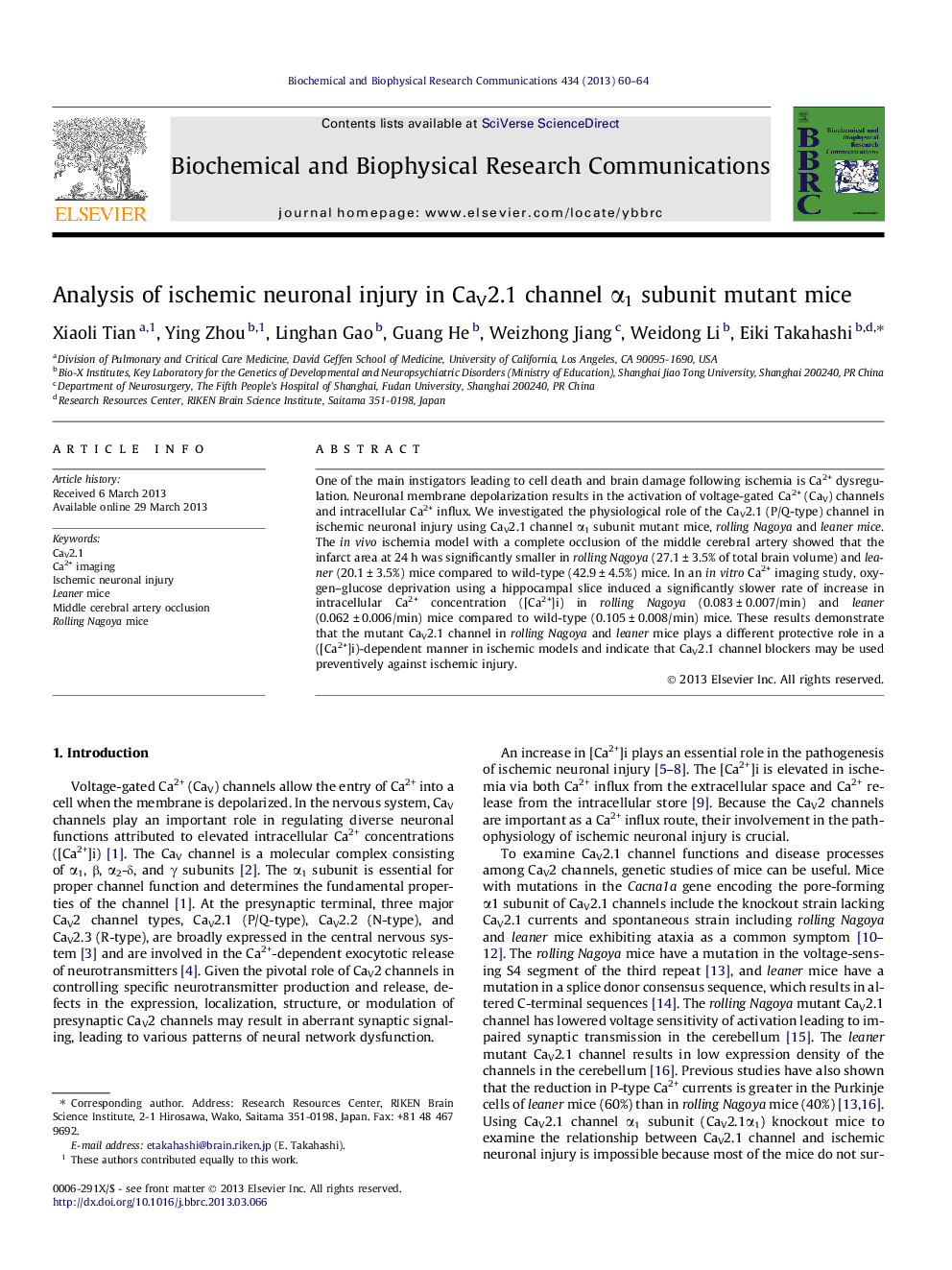| Article ID | Journal | Published Year | Pages | File Type |
|---|---|---|---|---|
| 1928852 | Biochemical and Biophysical Research Communications | 2013 | 5 Pages |
•We studied the physiological role of CaV2.1α1 in ischemic neuronal injury using mutants.•Rolling Nagoya and leaner mouse brains showed similar CaV2.1α1 expression patterns.•MCAO model showed more severe ischemic area in rolling Nagoya than in leaner mice.•Higher [Ca2+]i was induced in rolling Nagoya than in leaner mice.•When examining ischemic mechanisms, comparison of allelic variants was useful.
One of the main instigators leading to cell death and brain damage following ischemia is Ca2+ dysregulation. Neuronal membrane depolarization results in the activation of voltage-gated Ca2+ (CaV) channels and intracellular Ca2+ influx. We investigated the physiological role of the CaV2.1 (P/Q-type) channel in ischemic neuronal injury using CaV2.1 channel α1 subunit mutant mice, rolling Nagoya and leaner mice. The in vivo ischemia model with a complete occlusion of the middle cerebral artery showed that the infarct area at 24 h was significantly smaller in rolling Nagoya (27.1 ± 3.5% of total brain volume) and leaner (20.1 ± 3.5%) mice compared to wild-type (42.9 ± 4.5%) mice. In an in vitro Ca2+ imaging study, oxygen–glucose deprivation using a hippocampal slice induced a significantly slower rate of increase in intracellular Ca2+ concentration ([Ca2+]i) in rolling Nagoya (0.083 ± 0.007/min) and leaner (0.062 ± 0.006/min) mice compared to wild-type (0.105 ± 0.008/min) mice. These results demonstrate that the mutant CaV2.1 channel in rolling Nagoya and leaner mice plays a different protective role in a ([Ca2+]i)-dependent manner in ischemic models and indicate that CaV2.1 channel blockers may be used preventively against ischemic injury.
